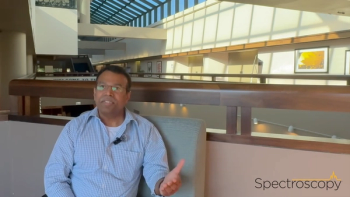
AI-Powered ‘IR-Bot’ Brings Real-Time Spectrochemical Analysis to Autonomous Labs
Key Takeaways
- IR-Bot autonomously analyzes chemical mixtures using infrared spectroscopy, machine learning, and quantum chemical simulations, enhancing autonomous chemistry.
- The system addresses the bottleneck of rapid and accurate quantification of reaction mixtures in automated laboratories.
Scientists have developed IR-Bot, an autonomous robotic platform that combines infrared spectroscopy, machine learning, and quantum chemistry to perform real-time analysis of chemical mixtures. The system promises to transform autonomous experimentation by delivering rapid, accurate feedback to guide chemical reactions without human oversight.
A New Era for Autonomous Chemistry
A research team from the University of Science and Technology of China (USTC) has unveiled IR-Bot, a pioneering robotic system that autonomously analyzes chemical mixtures in real time using infrared (IR) spectroscopy, machine learning (ML), and quantum chemical simulations (1). Designed to close the gap between data acquisition and decision-making, IR-Bot represents a major step forward in autonomous chemistry—where experiments are planned, executed, and optimized without direct human intervention.
The project was led by Xiaoyu Yue, Tao Song, Jiaqi Cao, Xiaolong Zhang, Shuo Feng, Weiwei Shang, Jun Jiang, and Linjiang Chen from the State Key Laboratory of Precision and Intelligent Chemistry, the Hefei National Research Center for Physical Sciences at the Microscale, and the School of Chemistry and Materials Science at USTC, Hefei, China (1).
Tackling a Central Challenge in Autonomous Experimentation
Modern automated laboratories can already conduct thousands of reactions in parallel, but a persistent bottleneck remains: the rapid and accurate quantification of reaction mixtures (1). Without this capability, robots cannot adjust experimental conditions or make informed decisions mid-reaction, limiting automation’s potential.
Infrared spectroscopy is an attractive solution. It probes molecular vibrations, offering structural fingerprints quickly and with minimal sample preparation (1). However, while acquiring IR spectra is straightforward, interpreting them on the fly—especially in complex mixtures—has remained a formidable challenge. That’s where machine learning enters the picture.
Inside the IR-Bot System
At the heart of IR-Bot is a large-language-model-based “IR Agent” that coordinates quantum chemical simulations, experimental data collection, and ML-driven spectral interpretation (1). The robotic system itself consists of a rail-mounted robot, two mobile units, and automated liquid handling components. Together, they prepare samples, transfer them to an FT-IR spectrometer (Nicolet iS50, Thermo Fisher Scientific), acquire spectra, and feed the data into the analysis pipeline—without human intervention.
The system’s analytical power is built around a two-step alignment-prediction framework. First, experimental spectra are aligned with simulated reference spectra to correct for noise, baseline drift, and instrumental variations. Then, a pre-trained ML model—developed using theoretical spectra—predicts the composition of the mixture from the aligned data (1).
Demonstrating Real-Time Spectroscopy in Action
To demonstrate its capabilities, the researchers applied IR-Bot to a Suzuki coupling reaction involving benzoyl chloride and 4-cyanophenylboronic acid pinacol ester (1). Instead of analyzing the entire reaction mixture—which contains catalysts, bases, and solvents that complicate spectra—they studied simplified binary and ternary systems, such as mixtures of product and by-product components. This allowed them to rigorously validate the system’s predictive performance under controlled conditions.
IR-Bot accurately quantified mixture compositions and identified the most influential vibrational features driving its predictions, such as carbon-boron and carbonyl stretching modes. This explainable ML feature provides valuable chemical insights while building user confidence in automated analyses (1–4).
Advantages Over Traditional Methods
Traditional techniques like nuclear magnetic resonance (NMR), mass spectrometry (MS), and high-performance liquid chromatography (HPLC) remain gold standards for structural elucidation, but they are often too slow, complex, or resource-intensive for closed-loop experimentation (1). In contrast, IR-Bot’s combination of speed, automation, and ease of use makes it ideally suited for real-time feedback applications.
While the researchers emphasize that IR-Bot is not meant to replace high-resolution analytical tools, its ability to deliver rapid, actionable compositional data could make it indispensable in autonomous workflows. In such settings, reaction conditions could be adjusted dynamically based on ongoing analyses, minimizing waste, and accelerating discovery.
Future Directions
Looking ahead, the team envisions extending IR-Bot beyond Suzuki reactions to other cross-coupling systems like Negishi, Stille, and Sonogashira reactions. These more complex reactions will introduce new vibrational signatures, overlapping peaks, and spectral challenges—but the researchers are confident that expanding the spectral database and retraining the ML models will address them (1).
With its robust, explainable, and scalable framework, IR-Bot represents a significant leap toward fully autonomous laboratories where robots not only perform experiments but also understand and optimize them in real time (1–4).
References
(1) Yue, X.; Song, T.; Cao, J.; Zhang, X.; Feng, S.; Shang, W.; Jiang, J.; Chen, L. IR-Bot: an autonomous robotic system for real-time chemical mixture analysis via infrared spectroscopy and machine learning. CCS Chem. 2025, 1–19. DOI:
(2) Workman, J., Jr. How Is Explainable AI Transforming Spectroscopy? Spectroscopy 2025, Online, October 8.
(3) Contreras, J.; Bocklitz, T. Explainable Artificial Intelligence for Spectroscopy Data: A Review. Pflügers Arch. Eur. J. Physiol. 2025, 477, 603–615. DOI:
(4) Ahmed, M. T.; et al. A Systematic Review of Explainable Artificial Intelligence for Spectroscopy. Comput. Electron. Agric. 2025, 110354. DOI:
Newsletter
Get essential updates on the latest spectroscopy technologies, regulatory standards, and best practices—subscribe today to Spectroscopy.





